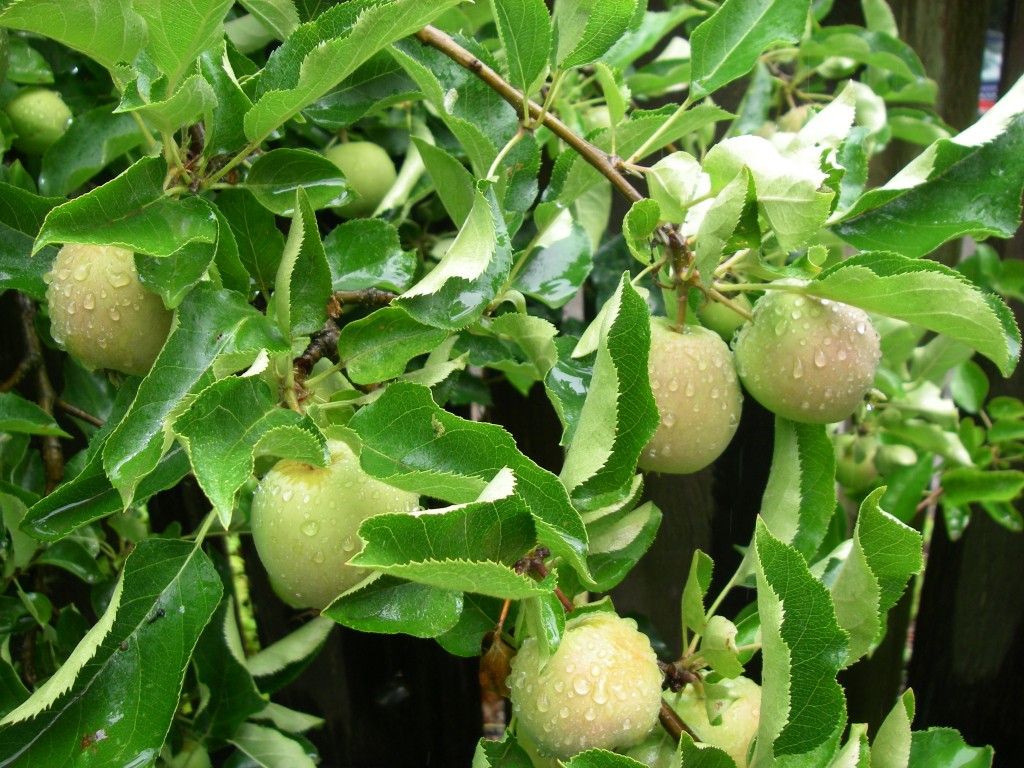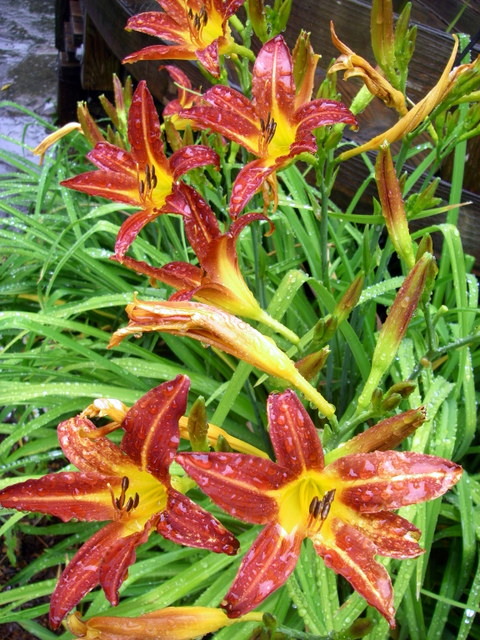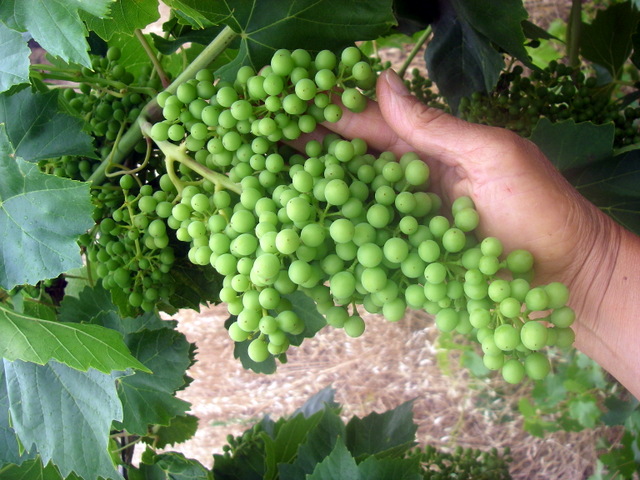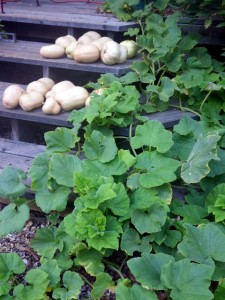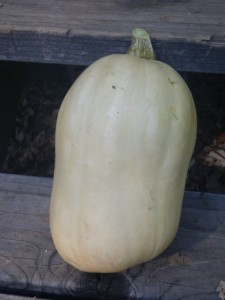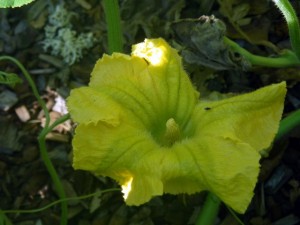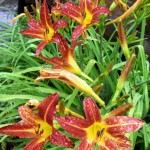
by Avis Licht
It’s two days after the Summer Solstice and the garden is coming into fruition. I am feeling so grateful to have a garden, to spend time in it, and to have so much wonderful food come out of it. We also have flowers everywhere, to bring color and joy. And to invite our friends the birds, butterflies and bees. It’s a regular gathering place for the multitudes. This unusual June rain is a gift beyond compare. Those of you in other parts may get summer rains. Maybe even too many. But here in California a summer rain is what we call a gift from heaven. Thank you to the Powers that Be.
Here are some photos I took this morning in the rain.
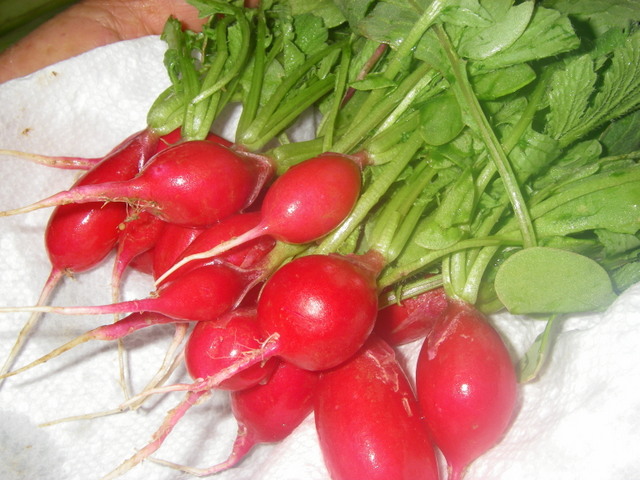
Radishes – Harvest early and often
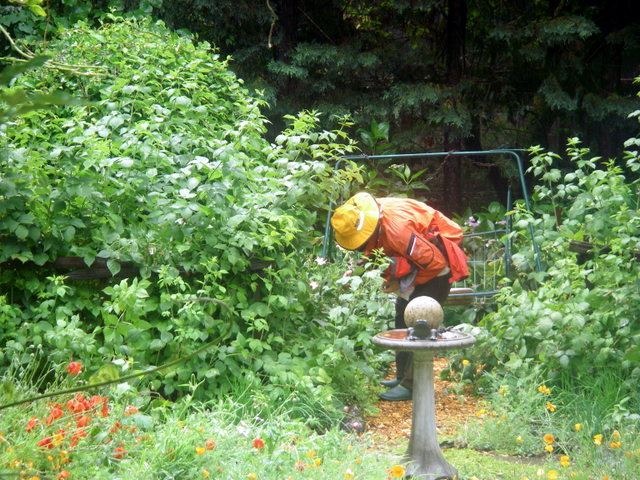
In an unusual June rain, we adore picking raspberries.
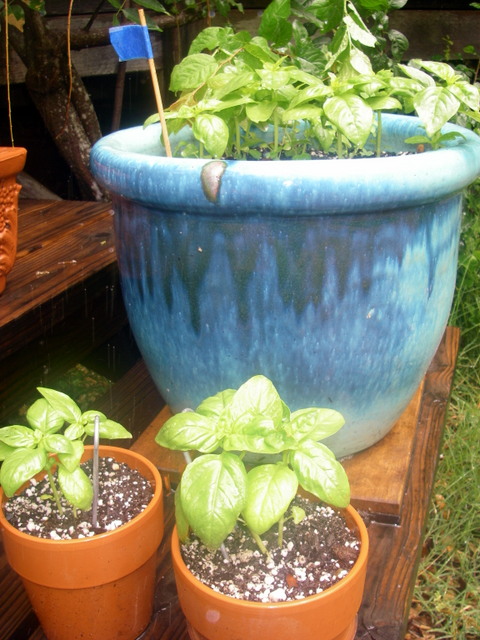
Growing basil in pots is easy. In the ground sometimes basil gets eaten by earwigs and slugs. In the pots not so much.
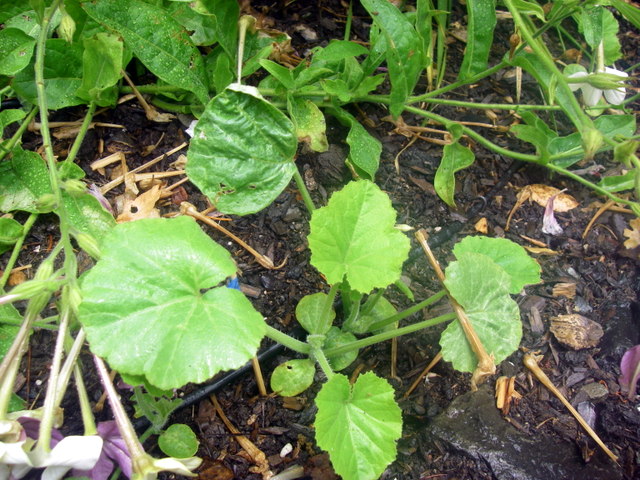
My seedlings of the squash have germinated beautifully and will start growing rapidly after this rain. The white flower is nicotiana, a fragrant night blooming flower.
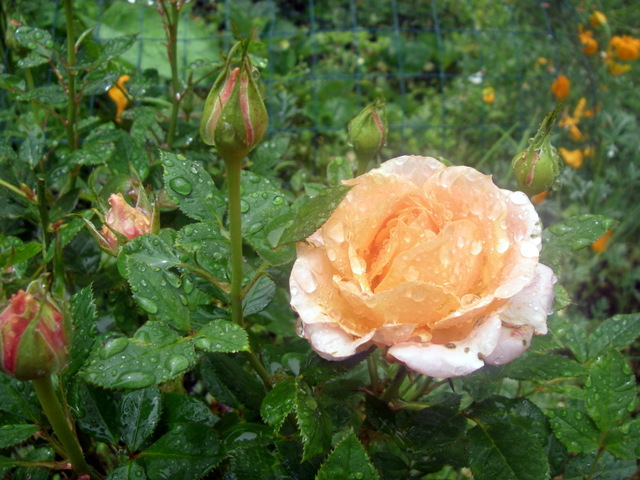
These roses have been blooming for months. After cutting them back a few weeks ago, they are starting all over again. I put these small roses all over the garden for beauty and delight. Rose petals are used in many culinary ways.
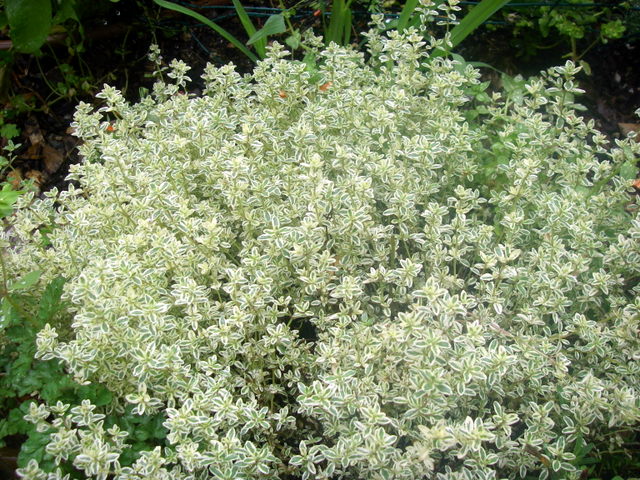
Variegated thyme provides a wonderful leaf contrast and I use it in cooking. I grow it near the strawberries as a companion plant.
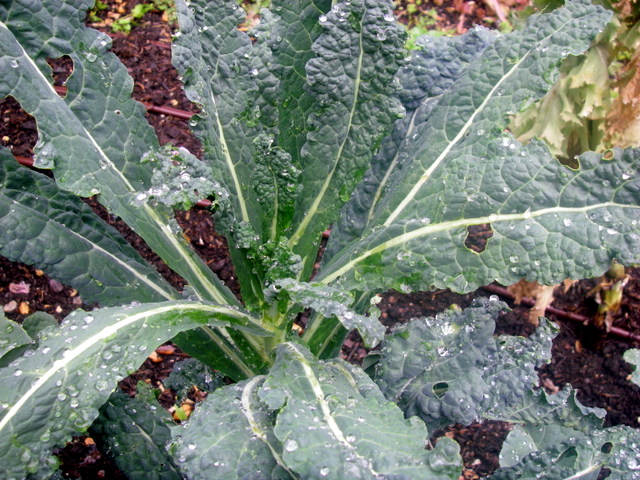
Even though my kale has a few munching holes in it, it’s still great to eat. I don’t worry about a few pecks here and there.
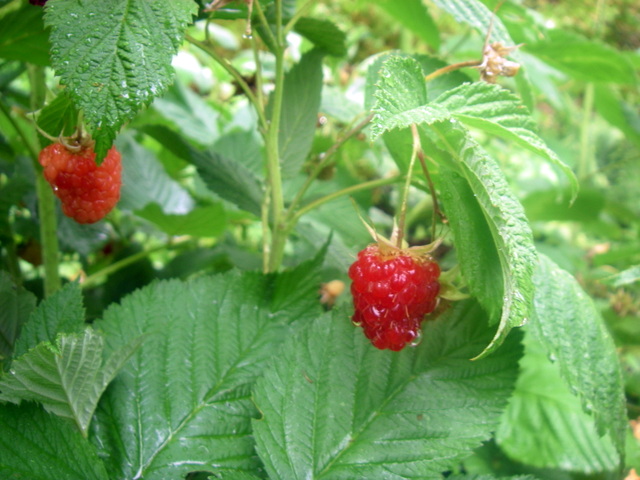
Raspberries are easy to grow and I feel rich when we eat them. They’re expensive to buy, and cheap to grow! Watch out though, they like to spread themselves around the garden. Read about them in this post:
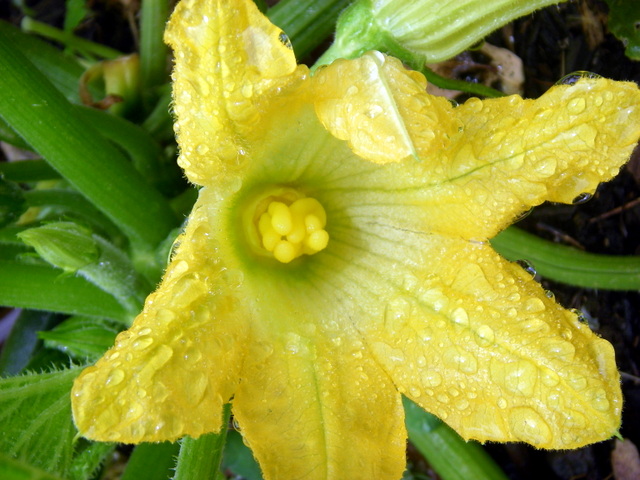
Your plants will have many blossoms, and we often get way too many zuchinnis. So why not eat the blossoms? They’re delicious. Here are some ways to cook them: Squash blossom with ricotta.
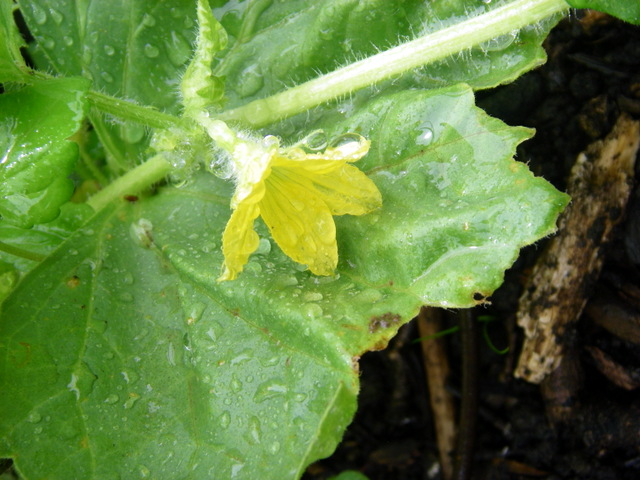
Once they start blossoming you can expect to get cucumbers soon and often. I plant 4 or 5 varieties, including lemon, Persian, Armenian,Thai and pickling. We love our cucumbers.
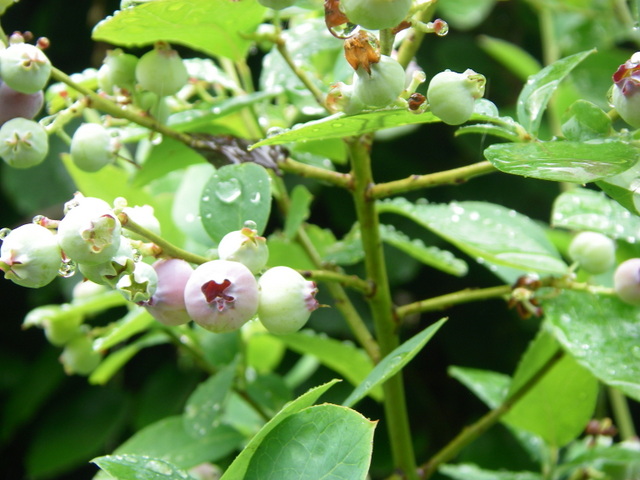
Given plenty of water, the blueberries are growing large and plump and we will harvest them over a long period of time. One of the best shrubs for the edible landscape. Read more on blueberries in this post.

